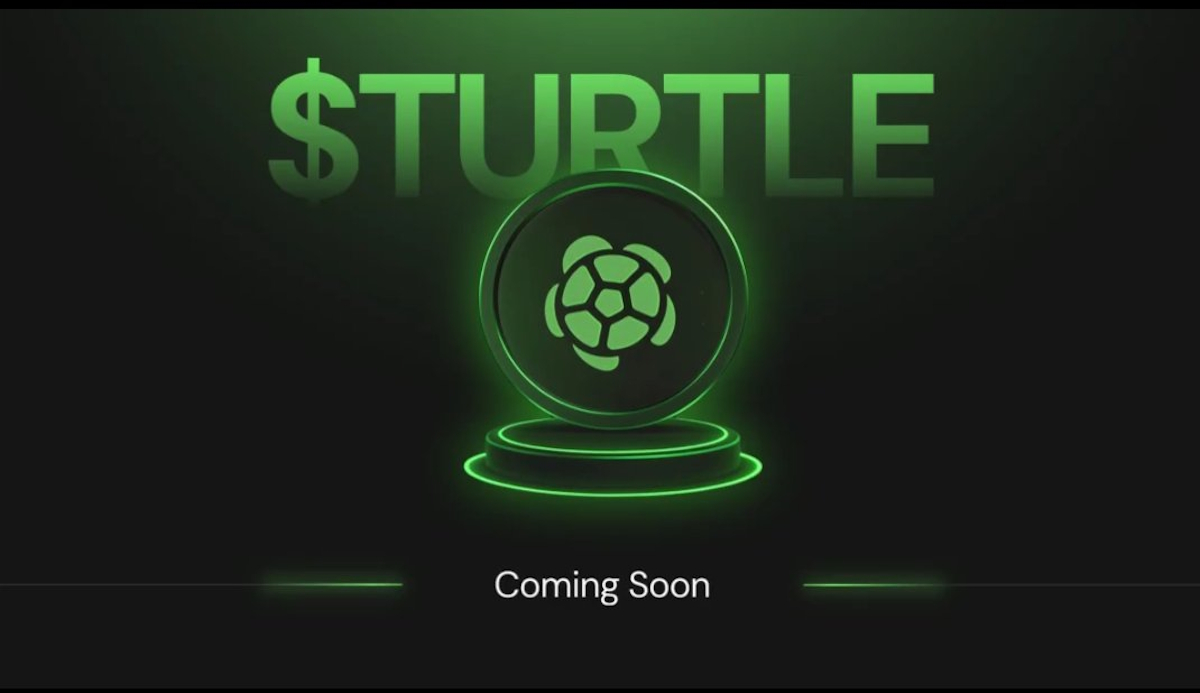Turtle (TURTLE) is a pioneering liquidity distribution protocol in the DeFi ecosystem that monetizes on-chain user activity across Web3. Unlike traditional models that rely on capital lock-up, Turtle introduces a non-custodial, data-driven incentive layer that rewards users for meaningful interactions such as liquidity provision, staking, and referrals. Designed for scalability and alignment, it offers a sustainable alternative to speculative yield farming.

In the continuously evolving landscape of decentralized finance (DeFi), the quest for capital efficiency, sustainable yield generation, and robust incentive design remains one of the core challenges. While DeFi protocols have demonstrated an unprecedented capacity to create open, composable financial systems, they still largely operate in siloed environments with fragmented liquidity, competing incentives, and a reliance on short-term yield farming campaigns that frequently lead to unsustainable capital flows. In this context, Turtle (TURTLE), launched in 2024, emerges as a novel infrastructure layer designed not to compete for locked liquidity, but to optimize its distribution and monetization through a model that recognizes and rewards on-chain behavior at a fundamental level.
Turtle positions itself not merely as a liquidity aggregator or yield optimization protocol, but as a non-custodial distribution protocol that introduces a new economic primitive into the DeFi stack: the monetization of user activity across the Web3 ecosystem. This means that Turtle does not rely on liquidity mining in the conventional sense — where users are incentivized to park capital in protocol-specific pools — but instead leverages wallet-level telemetry to capture, evaluate, and reward economically productive activity wherever it occurs on-chain. Whether a user is providing liquidity on a DEX, staking in a validator set, conducting token swaps, participating in governance, or contributing to referral networks, Turtle quantifies these interactions and allocates token-based rewards accordingly. In doing so, it transforms user engagement itself into a yield-bearing process, abstracting away the limitations of static capital commitment models that dominate current DeFi incentive structures.
The architecture of Turtle is designed with modularity, transparency, and scalability in mind. Rather than introducing new custodial layers or requiring users to migrate their assets to proprietary smart contracts, Turtle integrates directly with existing protocols through APIs, SDKs, and secure indexing infrastructure. This allows the protocol to function as a coordination layer that sits atop the existing DeFi landscape without introducing additional systemic risk. Users interact directly with the underlying protocols of their choice, maintaining complete custody of their assets, while Turtle’s indexing engine tracks and verifies their activity in real time. This approach not only preserves the decentralized ethos of Web3 but also mitigates the regulatory and technical risks associated with custodial or opaque intermediaries.
From a technical standpoint, Turtle introduces a granular and data-driven incentive mechanism that aligns the interests of three primary stakeholder classes: individual users (especially liquidity providers), DeFi protocols seeking to bootstrap or scale their ecosystems, and infrastructure or distribution partners such as wallets, analytics dashboards, and DAO communities. Liquidity providers register their wallets with Turtle by signing a cryptographic message, after which their on-chain activity is continuously evaluated against predefined criteria. Based on this telemetry, they gain access to “Boosted Deals” — liquidity or staking opportunities with enhanced yields, made possible through Turtle’s reward system — all while avoiding the overhead of deploying funds into new contracts or managing multiple DeFi accounts.
For protocols, Turtle offers an alternative to the traditional token emission model, which often leads to unsustainable inflation and speculative participation. Instead, by leveraging Turtle’s Client Portal, projects can design performance-based liquidity campaigns that tap into Turtle’s user base (which exceeds 275,000 active LPs as of late 2024), target capital precisely, and measure results transparently. This inversion of the liquidity mining paradigm — from indiscriminate token distribution to targeted, performance-based incentives — represents a step forward in protocol capital efficiency and DAO treasury management.
Additionally, Turtle introduces a unique revenue-sharing mechanism for integration partners. Through APIs or embedded widgets, third-party platforms such as wallets or DeFi dashboards can incorporate Turtle’s “Earn” functionality, thereby enabling their users to discover and access curated yield opportunities. These platforms receive a share of the value generated from user activity routed through their infrastructure, effectively aligning revenue models across the broader Web3 application stack and encouraging the organic growth of Turtle’s distribution network.
Central to this ecosystem is the TURTLE token, which functions as both a utility and governance asset. It is used to access exclusive liquidity opportunities, participate in on-chain governance processes, and accrue additional rewards via staking or long-term engagement. The token has a capped total supply of 1 billion, with a distribution model engineered to promote ecosystem growth while maintaining token scarcity and long-term alignment. A significant proportion of the token supply is allocated to liquidity and user incentives, while the remainder is distributed among the core team, early investors, strategic partners, and DAO contributors. Notably, the initial airdrop — Turtle Genesis — was structured to avoid speculative behavior by limiting eligibility to wallets that demonstrated verifiable economic contributions, such as DAO participation, liquidity provision, or leaderboard rankings. This emphasis on rewarding genuine utility creation reflects Turtle’s overarching design philosophy: to establish a meritocratic reward system rooted in verifiable on-chain behavior rather than hype or random allocation.
Furthermore, the tokenomics are underpinned by a vesting model designed to foster long-term engagement. Wallets that received modest TURTLE allocations during the Genesis Airdrop were granted full liquidity at token generation, while larger holders were subjected to partial immediate unlocks followed by a structured vesting schedule over twelve weeks. This creates a temporal alignment between protocol contributors and the evolving incentive architecture of the ecosystem, supporting a more stable market presence for the token.
The implications of Turtle’s model are significant. By redefining the basis of yield in Web3 from static capital deployment to dynamic behavior-based value creation, Turtle lays the groundwork for a more composable and resilient liquidity infrastructure. It offers a scalable solution to the coordination problems that have historically fragmented DeFi liquidity and provides a template for how protocols can interact with users and one another based on actual economic utility. Unlike legacy models that require continuous token emissions to retain user engagement, Turtle incentivizes activity that inherently supports the health and expansion of the Web3 ecosystem — creating a feedback loop in which economically aligned behaviors are both encouraged and monetized without custodial compromise.
This approach reflects broader trends in decentralized systems design — specifically, the shift toward “proof of contribution” models that reward participation based on transparent, data-driven criteria. In the same way that Ethereum transitioned from proof-of-work to proof-of-stake to better align security with capital commitment, protocols like Turtle represent a next step in DeFi’s evolution: aligning user incentives with measurable on-chain productivity. By operationalizing this alignment in a secure, non-custodial manner, Turtle challenges many of the assumptions underpinning yield farming and liquidity mining — namely, that capital lock-up is the sole or primary metric of value in decentralized systems.
As infrastructure across Web3 continues to mature, the demand for interoperable, composable, and user-centric coordination layers will only intensify. Turtle’s contribution lies not just in offering yield opportunities, but in reframing the very mechanics by which value is recognized and distributed in an open financial network. The protocol’s success will ultimately hinge on the extent to which it can maintain trustless data integrity, ecosystem neutrality, and incentive efficiency at scale — but its architecture represents a compelling vision for what the next era of DeFi coordination might look like: dynamic, data-native, and fundamentally aligned with the behaviors that drive real economic activity in the Web3 universe.


